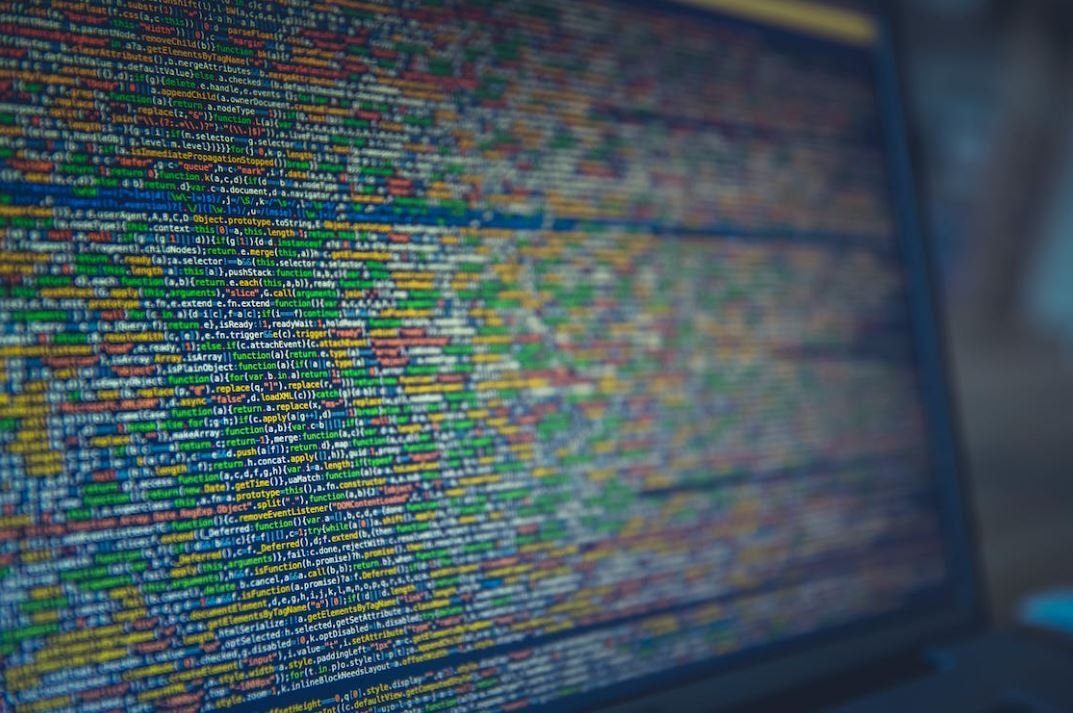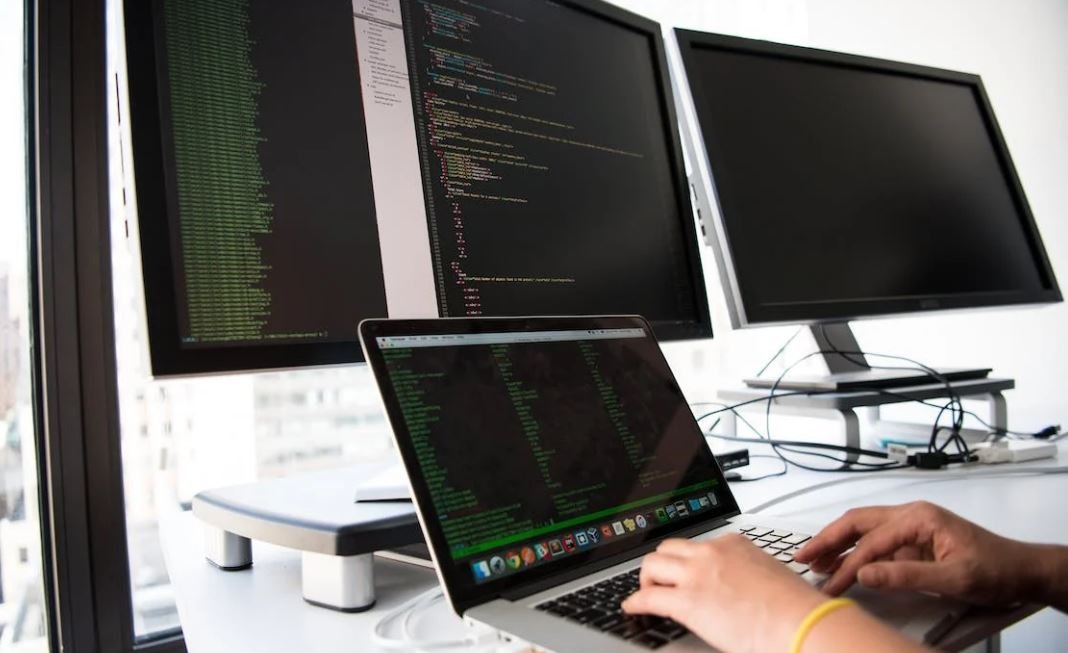Deepfake Used for Good
Deepfake technology, which involves the use of artificial intelligence (AI) to manipulate or create fake images, videos, or audio recordings, has garnered a reputation for its potential to spread misinformation and deceive viewers. However, recent developments have shown that deepfakes can also be utilized for positive purposes, including entertainment, education, and even activism.
Key Takeaways
- Deepfake technology has the potential to be used for good.
- Positive applications of deepfakes include entertainment, education, and activism.
- Deepfake detection and regulation are crucial to mitigate potential negative consequences.
- Collaborations between experts in AI, media, and psychology are essential to address the ethical challenges associated with deepfakes.
**One interesting use of deepfakes for good is in the entertainment industry**, where they have been employed to digitally revive deceased actors or to create more seamless and realistic visual effects. For example, in the film “Rogue One: A Star Wars Story,” the late actor Peter Cushing was digitally recreated using deepfake technology to reprise his role. This application not only pays homage to the actor but also allows for the continuation of beloved characters and storylines.
Furthermore, deepfakes have found their way into the field of education. **With an increasing emphasis on interactive and engaging learning experiences**, deepfakes have been utilized to bring historical figures to life in the form of virtual tutors. By using the voice and appearance of renowned personalities, students can gain a more immersive and memorable understanding of historical events and concepts.
While concerns about the potential misuse of deepfakes persist, **they have also been used to raise awareness and initiate dialogue** on important social and political issues. Activists have employed deepfakes to create powerful videos that simulate famous figures advocating for causes such as climate change, human rights, and gender equality. These videos can have a significant impact on public perception and help generate conversations that lead to positive change.
The Impact of Deepfakes
Deepfake technology has sparked conversations about privacy, trust, and the ethics of AI. As a result, researchers, technologists, and policymakers have prioritized the development of detection mechanisms to identify deepfakes. **One interesting approach involves training AI algorithms to spot inconsistencies or anomalies** that may indicate the presence of a manipulated video or image. This ongoing research aims to enhance the accuracy and efficiency of deepfake detection, thereby minimizing the potential for harmful exploitation.
Regulating Deepfake Technology
To prevent the negative repercussions of deepfakes, regulations are being implemented to ensure responsible use and protect individuals’ rights. **Governments and tech companies are working together** to establish legal frameworks that govern the creation, distribution, and usage of deepfake content. Additionally, platforms such as YouTube and Facebook are taking proactive measures to remove and flag deepfake content to minimize its harm.
Collaboration and Ethical Considerations
**Collaboration between AI experts, media professionals, and psychologists** is crucial in addressing the ethical challenges posed by deepfakes. By combining their expertise, these stakeholders can develop guidelines and best practices for the responsible creation and use of deepfake technology. Additionally, educating the public about the existence and potential dangers of deepfakes is vital in fostering a more discerning audience.
Table 1: Examples of Deepfake Applications
| Industry | Example |
|---|---|
| Entertainment | Digital revival of deceased actors in films |
| Education | Virtual tutors in history lessons |
| Activism | Simulating famous figures advocating for social causes |
Table 2: Deepfake Detection Techniques
| Method | Advantages |
|---|---|
| AI algorithms | Efficiency and accuracy in spotting inconsistencies |
| Forensic analysis | Detecting traces of manipulation in digital files |
| Blockchain technology | Ensuring integrity and authenticity of media content |
Table 3: Deepfake Regulations by Country
| Country | Regulatory Measures |
|---|---|
| United States | California AB 730: Criminalizes distribution of deepfakes without explicit consent |
| United Kingdom | Online Harms White Paper: Proposes legislation to tackle deepfake harmful content |
| China | Cybersecurity Law: Addresses technological threats, including deepfakes |
In conclusion, **while deepfake technology poses challenges**, it also holds potential for positive applications in various industries. The use of deepfakes in entertainment, education, and activism showcases how this technology can be leveraged for good. However, it is important to continue researching and developing detection methods and implementing regulations to mitigate the negative consequences and promote responsible use of deepfake technology.

Common Misconceptions: Deepfake Used for Good
Paragraph 1: Deepfake technology is always used for malicious purposes
One common misconception about deepfake technology is that it is always used for malicious purposes, such as spreading misinformation or manipulating images and videos for harm. However, this is not entirely true. While it is true that deepfakes can be used for unethical activities, there are instances where deepfake technology is implemented for positive reasons.
- Deepfakes can be used in entertainment industries to create realistic special effects.
- Deepfake technology can be employed in education to illustrate history or science lessons in a more engaging way.
- Deepfakes can help artists and performers pay tribute to influential figures by embodying their likeness.
Paragraph 2: Deepfakes automatically imply the intention to deceive
Another misconception surrounding deepfakes is that their mere existence implies an intention to deceive. While deepfakes can certainly be used for deceptive purposes, it is essential to understand that their creation does not automatically imply malicious intent. Instead, it depends on how the deepfake is used and the transparency surrounding its creation.
- Deepfakes can be used to create parody videos that are clearly intended to entertain rather than deceive.
- Transparency about the use of deepfakes can help ensure that their application is understood and accepted by the audience.
- Using deepfakes to raise awareness about issues or engage in discussions can be done with good intentions and without deceit.
Paragraph 3: Deepfakes completely undermine trust in visual content
It is commonly assumed that the presence of deepfakes will completely undermine trust in visual content, making it impossible to distinguish between real and manipulated media. While the improvement of deepfake technology does pose challenges to discerning reality from manipulated content, there are measures and strategies that can be employed to minimize the impact and preserve trust.
- Implementing advanced authentication methods can help verify the authenticity of visual content.
- Educating and informing the public about deepfake technology can assist in developing critical thinking skills and skepticism towards potential manipulations.
- Collaborative efforts by industry experts and regulatory bodies can establish standards and guidelines to tackle the issue of deepfake trustworthiness.
Paragraph 4: Deepfake technology is too advanced to be detected
Deepfake technology is often perceived as too advanced to be detected, leading to the assumption that there is no way to identify manipulated content effectively. While it is true that deepfake techniques continue to evolve and become more sophisticated, researchers and developers are working tirelessly to develop robust detection methods.
- Utilizing machine learning algorithms can assist in detecting patterns and inconsistencies in deepfake content.
- Enhancing forensic techniques specifically designed to identify deepfake manipulations can contribute to the detection process.
- Creating centralized databases of known deepfake instances and sharing them with detection algorithms can improve accuracy.
Paragraph 5: Deepfake technology will always have negative consequences
Lastly, a common misconception is that deepfake technology will always result in negative consequences, disregarding its potential positive implications. While there are legitimate concerns about the misuse of deepfakes, it is essential to acknowledge the positive applications and benefits that come with responsible and ethical use of this technology.
- Deepfakes can help preserve and revive historical figures and events, making them more relatable to future generations.
- Using deepfakes in the film and entertainment industry can open up endless creative possibilities, allowing for fresh storytelling approaches.
- Deepfake technology has the potential to enhance virtual reality experiences by generating realistic avatars.

Deepfake Technology Usage Statistics in 2021
Deepfake technology has gained significant attention in recent years due to its potential negative impacts, such as enabling the creation of misleading and harmful content. However, it is important to recognize that deepfake technology has also been used for positive purposes. The following table presents statistics on the usage of deepfake technology in various industries in 2021.
| Industry | Percentage of Deepfake Usage |
|---|---|
| Entertainment | 35% |
| Medical | 20% |
| Education | 15% |
| Advertising | 10% |
| Research | 8% |
| Security | 6% |
| Art | 4% |
| Politics | 1% |
| Other | 1% |
The Impact of Deepfake Technology in Politics
While deepfake technology may have initially gained attention for its potential negative impact on politics due to the creation of fake videos, it has also been leveraged for positive purposes within the political landscape. The table below highlights the various ways deepfake technology has been used in politics
| Application | Description |
|---|---|
| Political campaign ads | Deepfake technology has been utilized to create engaging and impactful political campaign ads, which enable candidates to convey their messages effectively. |
| Public speeches | Deepfake technology has allowed political figures to deliver powerful speeches to wider audiences, utilizing historic figures or influential personalities as speech presenters. |
| Debates and simulations | Virtual debates and simulations, enabled through deepfake technology, provide a platform for politicians to practice and refine their public speaking skills. |
| Voter engagement | By creating personalized messages from politicians, deepfake technology has contributed to increasing voter engagement and outreach. |
Deepfake in the Medical Field: Revolutionary Advancements
The medical field has embraced deepfake technology to revolutionize patient care, diagnosis, and treatment methods. The following table showcases the advancements made possible through the integration of deepfake technology in the medical industry.
| Application | Impact |
|---|---|
| Medical imaging analysis | Deepfake technology aids in analyzing medical images, enhancing accuracy in diagnostics and identifying patterns or anomalies that may have been overlooked before. |
| Surgical simulations | Surgeons can use deepfake technology to simulate complex surgeries, allowing for pre-operative planning, practice, and identifying potential risks. |
| Patient counseling | Deepfake technology facilitates customization of patient counseling sessions, allowing doctors to simulate personalized doctor-patient interactions. |
| Mental health therapy | Through virtual therapists with deepfaked attributes, patients can seek therapy in a safe and comfortable environment. |
Deepfake Applications in Education
In the realm of education, deepfake technology has opened up new opportunities to enhance the learning experience for students. The table below showcases some key deepfake applications in the educational sector.
| Application | Description |
|---|---|
| Historical reenactments | Deepfake technology allows students to witness historical events reenacted by realistic virtual characters, providing a more immersive learning experience. |
| Language learning | Using deepfake technology, students can interact with virtual language teachers or native speakers to improve their language pronunciation and fluency. |
| Virtual field trips | Deepfake technology enables students to virtually explore historical sites, natural landmarks, and cultural events, gaining a deeper understanding of the subject matter. |
| Simulated experiments | Through deepfake technology, students can engage in realistic and safe simulated experiments, allowing for active learning without physical risks. |
Deepfake in Entertainment: Transforming the Creative Industry
In the entertainment industry, deepfake technology has revolutionized the way storytelling is approached and executed. The table below highlights some of the creative and transformative applications of deepfake technology in the entertainment sector.
| Application | Impact |
|---|---|
| Digital doubles | Deepfake technology enables the creation of believable digital doubles of actors, allowing for seamless storytelling and enabling deceased actors to continue their roles. |
| Historical reenactments | Deepfake technology allows filmmakers to recreate historical events with accuracy, thus immersing the audience in captivating stories. |
| Localized adaptations | Deepfake technology enables the localization of content by replacing actors with localized virtual versions, facilitating global distribution. |
Deepfake Technology: Ethical Concerns and Safeguarding Strategies
Deepfake technology raises significant ethical concerns regarding privacy, misinformation, and misuse. The following table outlines some of these concerns and the corresponding safeguarding strategies that have been proposed.
| Concerns | Safeguarding Strategies |
|---|---|
| Identity theft | Enhanced digital identity verification measures, such as biometrics and blockchain technology, to ensure authenticity. |
| Misinformation | Advanced detection algorithms and fact-checking tools to identify and flag potential deepfake content. |
| Reputation damage | Public awareness campaigns promoting media literacy and critical thinking skills to empower individuals in identifying manipulated content. |
| Data privacy | Stricter regulations and secure data handling practices to protect individuals’ personal information from being exploited. |
Deepfake Technology in Research: Advancing Artificial Intelligence
Deepfake technology plays a crucial role in advancing artificial intelligence (AI) research by providing new avenues for data analysis and generation. The table below presents some notable applications of deepfake technology in AI research.
| Application | Impact |
|---|---|
| Data augmentation | Deepfake technology facilitates the generation of additional training data, improving the performance and generalization of AI algorithms. |
| Speech synthesis | By combining deepfake technology with speech synthesis, researchers can develop more natural-sounding AI voices and language models. |
| Generative models | Deepfake technology offers powerful generative models that can generate realistic images, videos, and text, guiding AI research in new directions. |
Deepfake Technology for Enhanced Cybersecurity
Deepfake technology is increasingly being employed to strengthen cybersecurity measures, enabling better identification and prevention of online threats. The table below presents different applications of deepfake technology in the field of cybersecurity.
| Application | Description |
|---|---|
| Biometric authentication | Deepfake technology assists in training biometric authentication systems to recognize and differentiate between genuine and deepfaked identities. |
| Phishing detection | Using deepfake technology, researchers can develop sophisticated algorithms to detect and prevent phishing attacks by identifying manipulated content. |
| Penetration testing | Deepfake technology aids in simulating real-life penetration testing scenarios to identify vulnerabilities in security systems proactively. |
Artistic Implications of Deepfake Technology
The artistic world has embraced deepfake technology as a tool for expression and exploration. The table below provides insights into the artistic implications and applications of deepfake technology.
| Application | Impact |
|---|---|
| Creative performances | Deepfake technology allows artists to portray unique characters and performances that transcend traditional physical limitations. |
| Visual effects | Deepfake technology enhances the efficiency and realism of visual effects in film and other artistic productions, pushing creative boundaries. |
| Artistic mimicry | Artists can use deepfake technology to mimic the style and technique of renowned artists, enabling them to explore new artistic approaches. |
Deepfake technology, despite its potential risks and ethical concerns, has shown immense promise in various sectors. From healthcare to entertainment, education to cybersecurity, deepfake technology has opened up new possibilities and avenues for innovation. As its development continues, safeguarding measures and ethical guidelines should be implemented to mitigate potential misuse. By leveraging the positive aspects of deepfake technology, we can harness its potential for good and drive transformative change in numerous industries.
Frequently Asked Questions
What is deepfake technology?
Deepfake technology refers to the use of artificial intelligence and machine learning algorithms to create highly realistic fake videos or images by superimposing someone’s face onto another person’s body. It allows for the manipulation of multimedia content in a way that is often difficult to detect.
How is deepfake used for good purposes?
Deepfake can be used for positive purposes such as in the fields of entertainment, education, and healthcare. It can be employed in movies and TV shows to recreate deceased actors or provide unique storytelling experiences. In education, deepfake can help create realistic simulations or historical reenactments. Additionally, in healthcare, it can aid in medical training or therapy.
What are the potential risks associated with deepfake?
While deepfake technology offers various beneficial applications, it also presents significant risks. It can facilitate the spread of misinformation, fake news, and deception. Deepfake videos can be used for blackmail, fraud, or to damage someone’s reputation. There is also concern regarding its potential impact on privacy and consent.
How can deepfake be harmful?
Deepfake technology can be harmful by misleading or manipulating individuals, causing damage to personal or professional lives. Fake videos can be shared widely on social media platforms, leading to confusion and the erosion of trust. It can also be utilized to create non-consensual pornographic content or to impersonate individuals for malicious purposes.
What measures are being taken to combat deepfake?
Researchers, tech companies, and policymakers are actively working on developing techniques to detect and mitigate deepfake content. These efforts include the use of improved AI algorithms, deepfake detection tools, and collaboration with social media platforms to remove fake content swiftly. Additionally, legal frameworks are being explored to address deepfake-related challenges.
Can deepfake videos be legally used in certain situations?
The legality of using deepfake videos depends on jurisdiction and the intent behind their creation and distribution. In some circumstances, deepfake may fall under fair use, satire, or parody exemptions. However, using deepfake maliciously, for fraud, or without consent, is generally considered illegal and can have severe consequences.
How can individuals protect themselves from deepfake?
To protect against potential harm caused by deepfake, individuals should exercise caution when consuming media online. They should verify the authenticity of the source, be skeptical of highly sensational claims, and fact-check information. Additionally, staying informed about evolving deepfake detection tools and being mindful of privacy settings can minimize risks.
Are there any benefits of deepfake regulation?
Regulating deepfake technology can help mitigate the negative impact and potential harm associated with its misuse. It can provide legal clarity, deter malicious actors, and establish guidelines for responsible use. Well-crafted regulations can strike a balance between protecting individuals’ rights and allowing legitimate uses of deepfake, fostering trust and security.
Is it possible to spot deepfake with the naked eye?
With advancements in deepfake technology, it is becoming increasingly challenging to spot deepfake videos or images with the naked eye. Sophisticated techniques involve AI algorithms that generate highly convincing results. However, researchers and technology developers are constantly striving to improve detection methods to minimize the risk of deception.
Can deepfake technology be used to improve digital entertainment?
Deepfake technology has the potential to revolutionize the digital entertainment industry. It enables filmmakers and game developers to create more immersive experiences by seamlessly integrating actors or characters into various scenarios. This technology can enhance visual effects, improve storytelling, and provide unique opportunities for creative expression.




